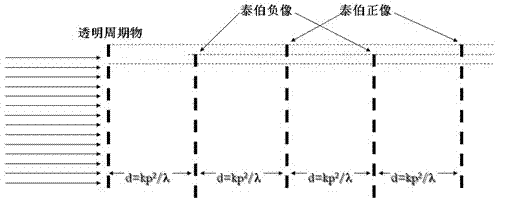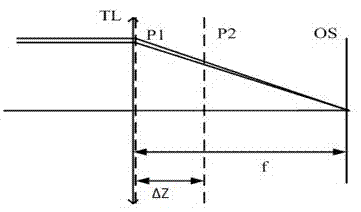Focal power detecting system of multifocal lens based on Talbot effect
A detection system and multi-focus technology, applied in the direction of testing optical performance, etc., can solve the problems of multiple measurements of multi-focal lenses, harsh measurement conditions, and large amount of calculation, and achieve simple optical path construction, real-time processing, and improved stability. Effect
- Summary
- Abstract
- Description
- Claims
- Application Information
AI Technical Summary
Problems solved by technology
Method used
Image
Examples
Embodiment Construction
[0014] Such as figure 1 The schematic diagram of the focal power detection system of the multi-focus lens based on the Taber effect is shown in the figure. The laser light source 1 emitted by the laser is expanded and collimated by the spatial filter 2 and the collimator lens 3 to form parallel light. After passing through the multi-focus lens 4 to be tested, the Through two main Ronchi gratings 5 and auxiliary Ronchi gratings 6 with an included angle, the distorted Moiré fringes containing the focal power information of the measured lens are obtained on the CCD receiving screen 7, and image processing and calculation are performed by a PC 8 to obtain The focal power information of the measured lens is output.
[0015] The 532nm high-steady-state semiconductor laser is used as the light source, and the human eye is most sensitive to light of this wavelength, so it is more accurate and effective to use the light source of this wavelength to measure the multi-focal lens. The ...
PUM
 Login to View More
Login to View More Abstract
Description
Claims
Application Information
 Login to View More
Login to View More - R&D
- Intellectual Property
- Life Sciences
- Materials
- Tech Scout
- Unparalleled Data Quality
- Higher Quality Content
- 60% Fewer Hallucinations
Browse by: Latest US Patents, China's latest patents, Technical Efficacy Thesaurus, Application Domain, Technology Topic, Popular Technical Reports.
© 2025 PatSnap. All rights reserved.Legal|Privacy policy|Modern Slavery Act Transparency Statement|Sitemap|About US| Contact US: help@patsnap.com



